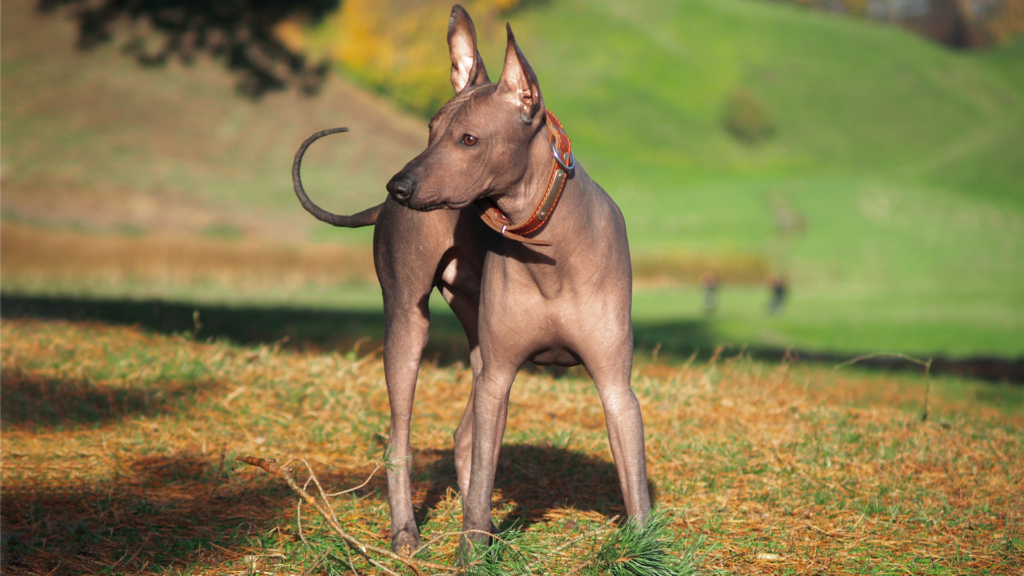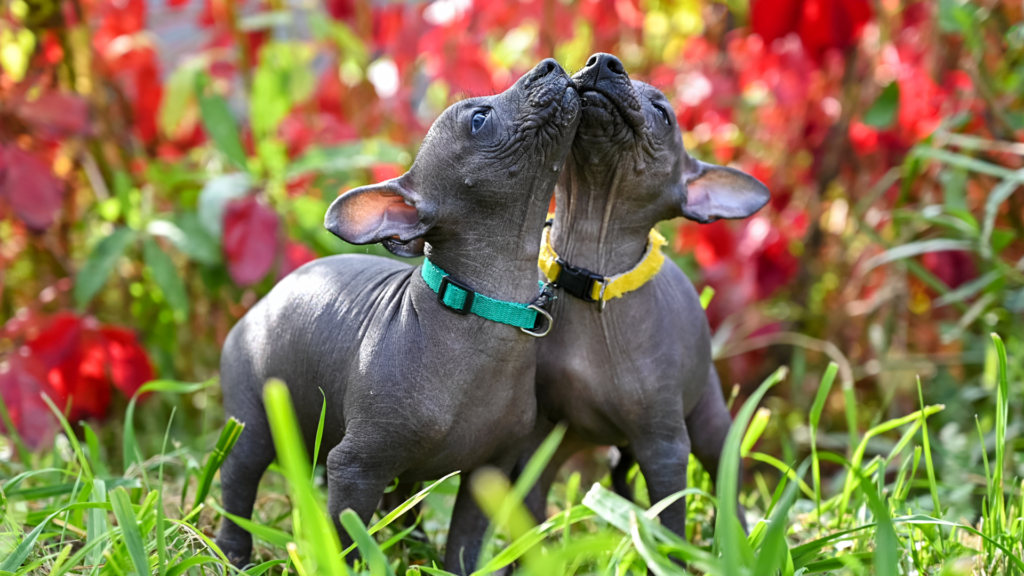Introduction
Dogs are often referred to as man’s best friend, and the Xoloitzcuintle dog is no exception. This unique breed of dog is known for its affectionate nature, loyalty, and playful spirit. Also known as the Mexican hairless dog, this breed has an interesting history and unique physical characteristics. In this blog post, we’ll explore the history, physical characteristics, temperament, and personality of the Xoloitzcuintle dog.
History and Origin
The Xoloitzcuintle dog has a rich history dating back to pre-Columbian times in Mexico. The breed was highly regarded by the Aztecs, who believed the dogs had healing powers and were guardians of the underworld. The Aztecs also believed that the Xoloitzcuintle dog could protect their homes from evil spirits and disease.
When the Spanish conquistadors arrived in Mexico in the 16th century, they brought with them their own dogs, which were bred with the Xoloitzcuintle. This crossbreeding led to a decline in the purebred Xoloitzcuintle population, but the breed persisted. In the 1950s, the Mexican government recognized the importance of preserving the breed and established a breeding program to promote the Xoloitzcuintle.
Today, the Xoloitzquintle is recognized as the national dog of Mexico and is cherished by dog lovers around the world.
Physical Characteristics
The Xoloitzcuintle dog is most notable for its lack of hair, but not all Xolos are hairless, there are also coated Xolos. Hairless Xolos have smooth, soft, and rubbery skin, which can range in color from black, gray, bronze, and red. Coated Xolos have a short, flat coat that can also come in a variety of colors.
These dogs have a sleek and slender body with a broad chest and well-muscled legs. They have large, upright ears and almond-shaped eyes that are usually dark in color. Xolos come in three sizes: toy, miniature, and standard. Toy Xolos weigh up to 10 pounds, miniature Xolos weigh between 10 and 30 pounds, and standard Xolos can weigh up to 55 pounds.
Temperament and Personality
The Xoloitzquintle dog is an affectionate and loyal companion, making them a great addition to any family. They are intelligent and trainable, which means they can be easily taught commands and tricks. Xolos are also energetic and playful, making them great for families with children.
One of the most interesting aspects of the Xoloitzcuintle’s personality is their sensitivity to their owner’s emotions. They are known to be empathetic and will often try to comfort their owner when they sense they are upset or stressed.
Xolos are also known for their independent nature, which can make them a challenge to train at times. However, with consistent and positive training, they can learn to follow commands and behave appropriately.
Health and Care
Like all dogs, Xoloitzcuintle dogs require regular veterinary care to ensure they remain healthy and happy. As a breed, Xolos are generally healthy and don’t have many health issues. However, there are some health concerns that Xolo owners should be aware of.
One of the most common health issues that Xolos face is skin problems. Because they are hairless, Xolos are more prone to sunburn, dry skin, and skin infections. To prevent these issues, it’s important to apply sunscreen to your Xolo’s skin when they are outside in the sun, and to moisturize their skin regularly.
Another common health issue that Xolos face is dental problems. Xolos can develop plaque buildup and gum disease if their teeth are not regularly cleaned. To keep your Xolo’s teeth healthy, it’s important to brush their teeth regularly and provide them with dental chews and toys.
Feeding
Feeding your Xoloitzcuintle a balanced diet is crucial to their overall health and wellbeing. Xolos have a high metabolism, which means they require a nutrient-rich diet to maintain their energy levels.
When choosing a dog food for your Xolo, look for high-quality, grain-free options that are specifically formulated for small breeds. Xolos have a small stomach, so it’s important to feed them small, frequent meals throughout the day instead of one large meal.
It’s also important to monitor your Xolo’s weight to prevent obesity, which can lead to health problems. Talk to your veterinarian about how much food your Xolo should be eating based on their size and activity level.
Exercise and Training
Xoloitzcuintle dogs are energetic and playful, which means they require regular exercise to maintain their physical and mental health. Daily walks and playtime in a secure, fenced yard are essential for keeping your Xolo happy and healthy.
Xolos are intelligent and trainable, but they can be stubborn at times. Positive reinforcement training methods, such as using treats and praise, work best with Xolos. They respond well to training that is consistent and rewards good behavior.
Socialization is also important for Xolos, especially if they will be around other dogs and people. Early socialization can help prevent behavioral issues such as fear and aggression.
Conclusion
The Xoloitzcuintle dog is a unique and fascinating breed that makes a wonderful companion for families and individuals. They are affectionate, loyal, and playful, but also have a strong independent streak. Proper health care, feeding, exercise, and training are essential for keeping your Xolo happy and healthy.
If you’re considering adding a Xoloitzcuintle to your family, do your research and make sure you’re prepared for the responsibilities that come with owning a dog. With proper care and attention, your Xolo will bring joy and companionship to your life for many years to come.
Image Gallery






